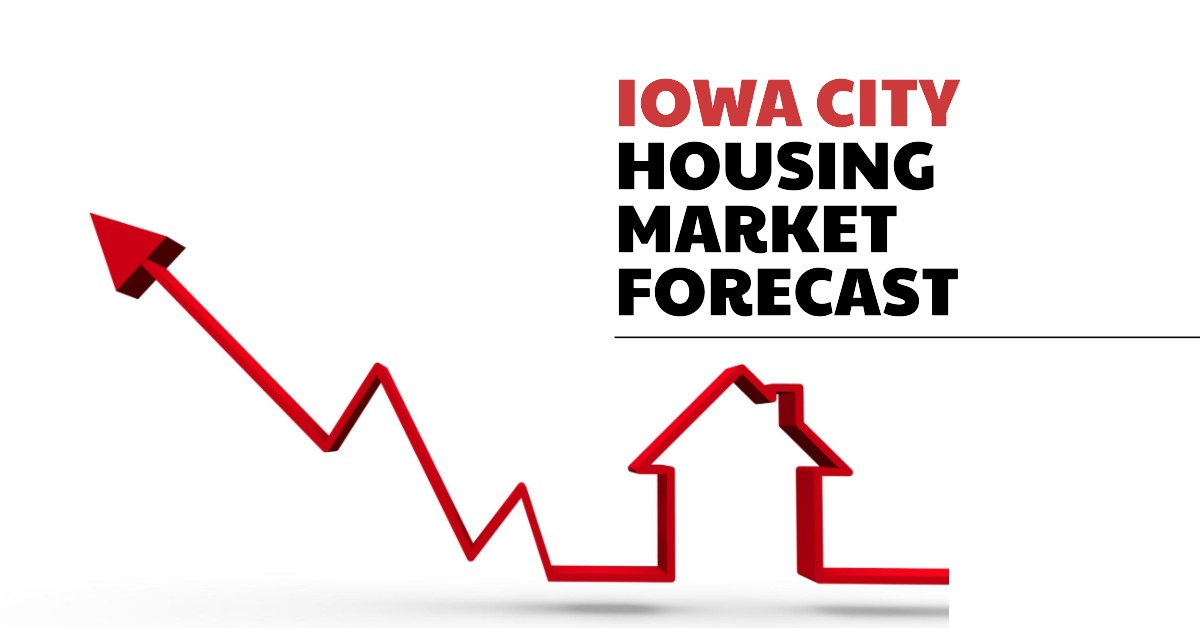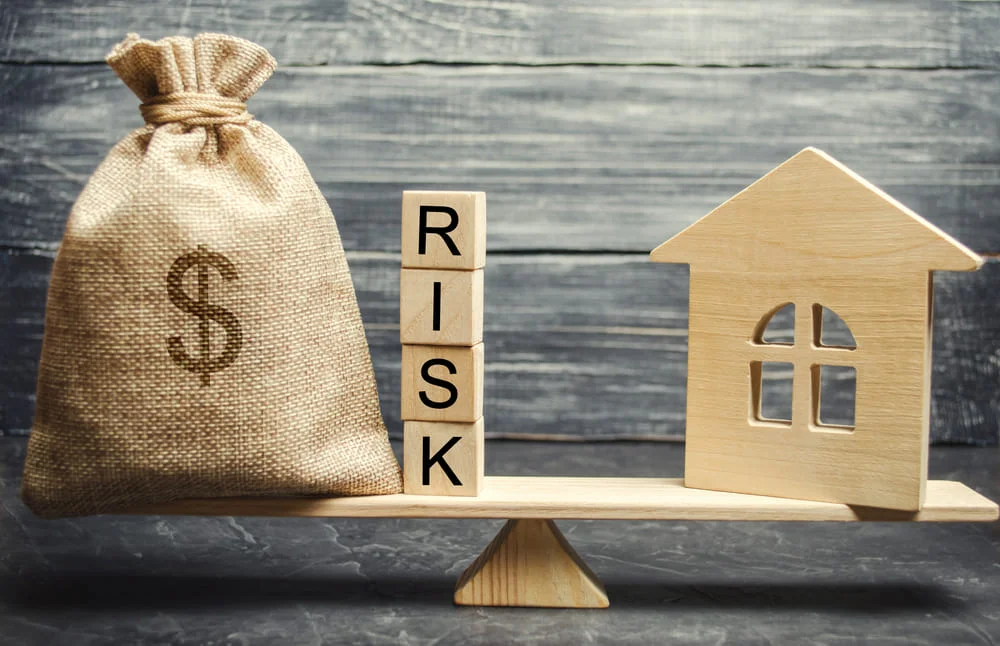If you're keeping an eye on the Iowa City housing market, you're likely wondering what's happening right now. In short, Iowa City is currently a buyer's market, with a median listing home price of $367.5K as of February 2025. This means there are generally more homes available than there are people looking to buy, giving buyers more negotiating power. Let's dive deeper into the factors shaping this market and what it means for you, whether you're considering buying, selling, or simply keeping tabs on your investment.
Table of Contents
Current Iowa City Housing Market Trends:
The Iowa City housing market, like any other, is dynamic and influenced by a variety of factors. Here's a snapshot of where things stand, according to Realtor.com data:
- Median Listing Home Price: $367,500
- Year-Over-Year Trend: Up 2.1%
- Median Listing Price Per Square Foot: $193
- Median Sold Home Price: $270,000
- Sale-to-List Price Ratio: 98.3%
- Median Days on Market: 43 Days
What does this mean? The median listing price is up, suggesting that sellers are confident in the value of their homes. However, the median sold price is lower than the listing price, and homes are selling slightly below the asking price. This further suggests that buyers have some leverage in negotiations. Also, the time it takes to sell a home is increasing, and indicates a shift away from the frenzied seller's market we saw in recent years.
Why is Iowa City a Buyer's Market?
A buyer's market essentially means there is more supply than demand. In Iowa City, this can be attributed to a few things:
- Interest Rate Impact: Rising interest rates have cooled down buyer enthusiasm, making mortgages more expensive and reducing the pool of potential buyers.
- Increased Inventory: While inventory is up, it's worth noting that there were no new listings in Iowa City within the last week, which shows the market is slowing down for now.
- Economic Uncertainty: Broader economic concerns can make people hesitant to make large purchases like a home.
My Take: From my years of experience, the Iowa City market is always somewhat insulated from national trends due to the presence of the University of Iowa. While rising interest rates certainly have an impact, the steady stream of students, faculty, and staff provides a baseline demand that many other markets don't have.
Navigating the Neighborhoods: Where Are the Hotspots in Iowa City?
Iowa City is comprised of 33 distinct neighborhoods, each with its unique character and price point. Knowing these differences can significantly impact your housing search.
Here's a quick look at some notable neighborhoods:
| Neighborhood | Median Listing Home Price | Listing $/SqFt |
|---|---|---|
| Eastside | $317.5K | $162 |
| Washington Hills | $120K | $138 |
| Peninsula Area | $315K | $183 |
| Longfellow | $330K | $238 |
| Northside | $357.5K | $212 |
| Manville Heights | $602K | $243 |
| Historic Downtown Iowa City | $597K | $539 |
- Most Expensive: Manville Heights, known for its larger homes and proximity to the University, tops the list. Historic Downtown Iowa City is another premium location, with significantly higher price per square foot.
- Most Affordable: Washington Hills offers a more budget-friendly option, making it attractive to first-time homebuyers or those looking for smaller properties.
My Advice: Don't just focus on the median listing price. Consider what's important to you. Do you value walkability? Are schools a priority? Research each neighborhood's amenities, school ratings, and overall vibe to find the best fit.
Decoding the Numbers: A Deeper Dive into Market Trends
Let's break down some of the key data points:
- Sale-to-List Price Ratio of 98.3%: This tells us that buyers are successfully negotiating around 1.7% off the asking price. While seemingly small, this can translate to significant savings, especially on higher-priced homes.
- Median Days on Market of 43 Days: This indicates that homes are taking longer to sell compared to the hyper-competitive market of the past few years. This gives buyers more time to consider their options and less pressure to make hasty decisions.
What this means for Buyers: Now is the time to negotiate! Don't be afraid to make a reasonable offer below the asking price, especially if the home has been on the market for longer than the average.
What this means for Sellers: Be realistic about your pricing. Overpricing your home could lead to it sitting on the market for longer and ultimately selling for less than you hoped for. Work with your real estate agent to determine a competitive price based on recent comparable sales.
Schools and Amenities: Factors That Influence Home Values
Beyond the raw numbers, factors like school quality and local amenities play a crucial role in determining property values.
- Schools: Iowa City boasts a number of highly-rated public schools. If you have children (or plan to), researching school districts is essential. Realtor.com sources school ratings from GreatSchools, a reputable provider.
- Amenities: Iowa City offers a vibrant mix of amenities, including grocery stores, restaurants, cafes, parks, and cultural attractions. Access to these amenities can significantly enhance your quality of life and make a neighborhood more desirable.
Don't Overlook: Consider factors like commute times, proximity to the University of Iowa, and access to public transportation. These can all impact your daily life and the value of your property.
Iowa City Housing Market Forecast 2025: What's Coming Up?
Thinking about buying or selling a home in Iowa City? You're probably wondering what the Iowa City housing market forecast looks like. In short, while prices are expected to increase slightly in the short-term, the current projections indicate a slight decrease over the next year. Let's dive into the details.
Home Price Prediction: A Mixed Bag
Zillow, a well-known name in real estate, provides some interesting forecasts for the Iowa City, IA metropolitan area. As of January 31, 2025, here's what they're predicting in terms of home value changes:
- Short-Term Growth (February 2025): A 0.3% increase is expected.
- Slightly More Growth (April 2025): A 0.5% increase is anticipated.
- One-Year Outlook (January 2025 – January 2026): A decrease of -0.8% is predicted.
| Region | Feb 2025 Change | One-Year Change (Jan 2025-Jan 2026) |
|---|---|---|
| Iowa City, IA | 0.3% | -0.8% |
So, what does this mean? We might see a little bump in home values in the immediate future, but the overall trend points towards a slight cooling off period over the next year. The reason could be attributed to a number of macroeconomics factors such as the Fed's monetary policy and the market is stabilizing.
How Iowa City Compares to Other Iowa Cities
It's always helpful to look at the bigger picture. How does the Iowa City housing market forecast stack up against other major cities in Iowa? Here's a comparison based on Zillow's data:
| Region | Feb 2025 Change | One-Year Change (Jan 2025-Jan 2026) |
|---|---|---|
| Des Moines, IA | 0.3% | -0.2% |
| Cedar Rapids, IA | 0.4% | 0.1% |
| Waterloo, IA | 0.6% | 0.4% |
| Sioux City, IA | 0.4% | 0.7% |
| Ames, IA | 0.4% | -0.3% |
| Dubuque, IA | 0.6% | 0.8% |
As you can see, some cities like Dubuque and Sioux City are expected to see more positive growth in the next year, while others like Des Moines and Ames are projected to experience a slight dip, similar to Iowa City. Cedar Rapids and Waterloo are predicted to have positive growth.
Will Home Prices Drop in Iowa City? Will It Crash?
A lot of people are worried about a potential housing market crash. Will home prices drop in Iowa City significantly? While a slight decrease is projected, it's unlikely we'll see a major crash. The current forecast suggests a minor adjustment, not a dramatic collapse.
Several factors contribute to this:
- Strong Local Economy: Iowa City has a relatively stable economy, anchored by the University of Iowa and related healthcare industries.
- Limited Inventory: We are not building as many homes as we used to.
- Desirable Place to Live: Iowa City is a popular place to live, which helps to maintain demand.
I think a gradual softening of prices is more probable than a sudden crash.
Looking Ahead: A Possible 2026 Forecast
Predicting the future is never easy, but here are a few factors to keep an eye on:
- Interest Rates: Changes in interest rates will continue to impact buyer demand.
- Economic Growth: The overall health of the economy will influence consumer confidence and housing market activity.
- University of Iowa Enrollment: The University's enrollment trends will continue to shape the rental and for-sale markets, especially in areas near campus.
- New Construction: New housing developments could add to the inventory and impact prices.
My Prediction: While the Iowa City housing market may continue to soften in the short term, I believe its long-term prospects remain strong. The University of Iowa provides a stable economic base, and the city offers a high quality of life that attracts residents from all over the world.
Should You Invest in the Iowa City Real Estate Market?
Population Growth and Trends
- Iowa City has experienced steady population growth over the years. Its attraction as a vibrant college town, with the University of Iowa at its heart, has drawn in a diverse mix of residents, including students, faculty, and professionals. This consistent influx of people contributes to a stable demand for housing, making it an enticing prospect for real estate investors.
- Furthermore, Iowa City's population trends have shown a propensity for long-term growth, bolstered by its reputation as an education hub and a place with a high quality of life. This bodes well for property investors looking for long-term appreciation in their real estate investments.
Economy and Jobs
- Iowa City's economy benefits from its role as a center for education, healthcare, and technology. The University of Iowa, along with various hospitals and research facilities, provides a steady source of employment opportunities. Additionally, the city's growing tech sector has been attracting talent and fostering job growth, which is integral to a thriving real estate market.
- The city's economic diversity and resistance to major economic downturns make it a favorable environment for real estate investors. A robust job market typically translates to a stable pool of renters and potential buyers, adding to the appeal of investing in Iowa City's real estate.
Livability and Other Factors
- Iowa City consistently ranks as one of the best places to live in the United States. Its livability is driven by factors such as excellent schools, cultural amenities, and a strong sense of community. Real estate investors can capitalize on this by catering to the demand for quality housing options that cater to the city's diverse population.
- Moreover, Iowa City's low crime rate and a multitude of parks and recreational opportunities contribute to its desirability as a place to call home. These aspects enhance the city's potential as an investment location, as they directly impact property values and rental income.
Rental Property Market Size and Its Growth for Investors
- The rental property market in Iowa City is substantial, largely driven by its student population and young professionals. Investors looking to tap into this market can benefit from the consistent demand for rentals, particularly near the University of Iowa campus. Over time, rental rates have shown moderate but steady growth, making it an attractive opportunity for investors seeking cash flow.
- Furthermore, Iowa City's rental vacancy rates tend to be relatively low, indicating that investors are likely to find tenants quickly. The growth potential for rental income and the opportunity to leverage the presence of a large student population make the city an appealing prospect for real estate investors.
Other Factors Related to Real Estate Investing
- Real estate investors in Iowa City should consider the impact of interest rates on their investments. Rising interest rates can affect both the cost of financing and the affordability of homes for potential buyers, potentially influencing property values.
- Market supply and demand dynamics are crucial to monitor. The city has experienced low inventory, which can drive up home prices. Investors should stay informed about market trends and potential shifts in supply and demand.
- Local regulations and taxes can significantly impact your investment returns. Understanding zoning laws, property taxes, and rental regulations is essential to make informed investment decisions.
- Finally, it's advisable to work with local real estate professionals who have in-depth knowledge of the Iowa City market. They can provide valuable insights and help you navigate the unique aspects of real estate investing in the area.
Read More:




